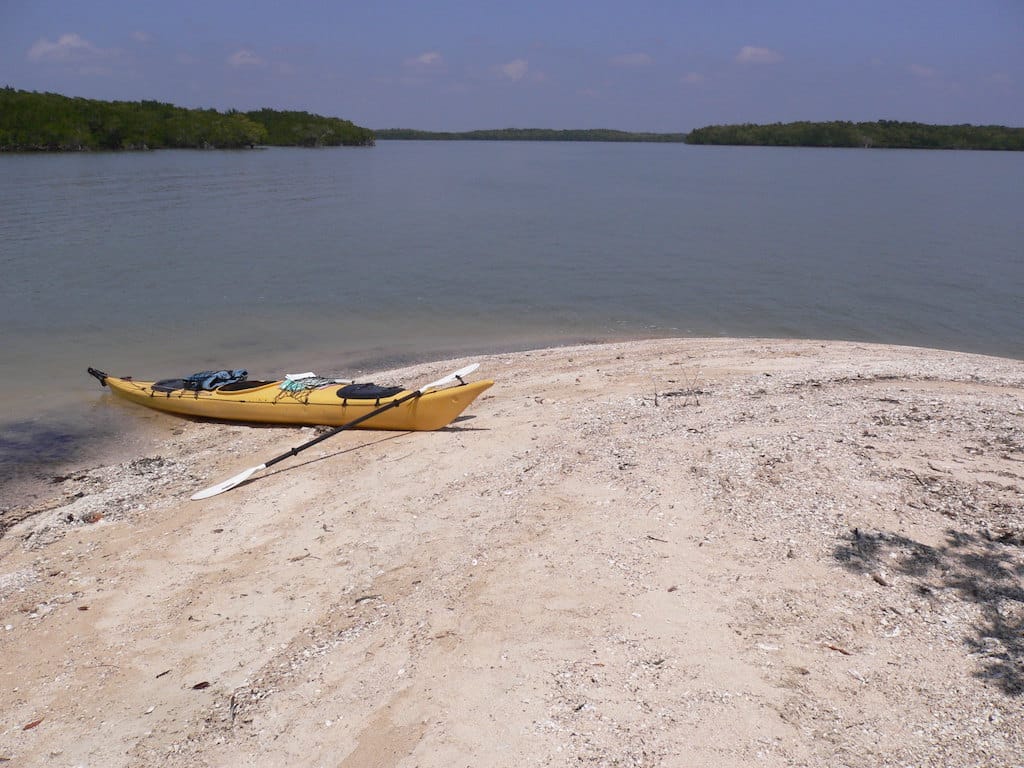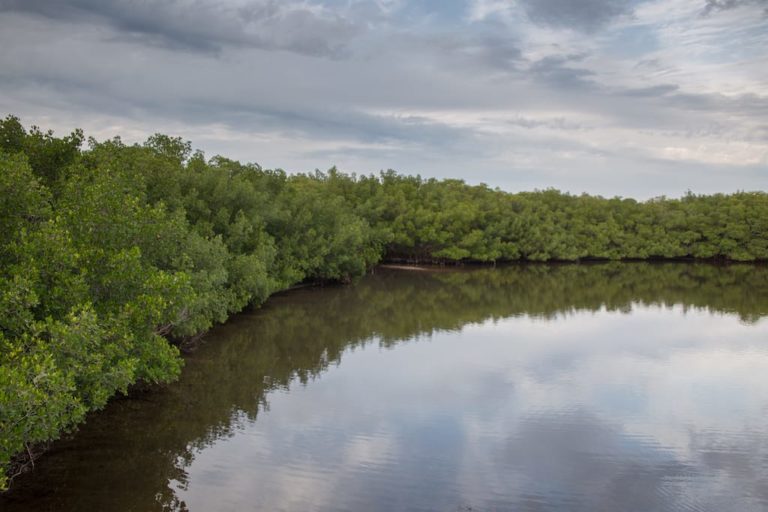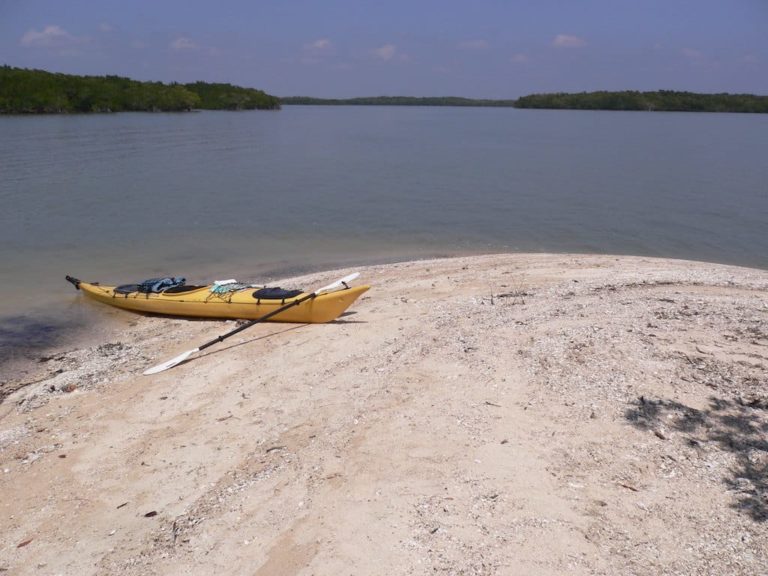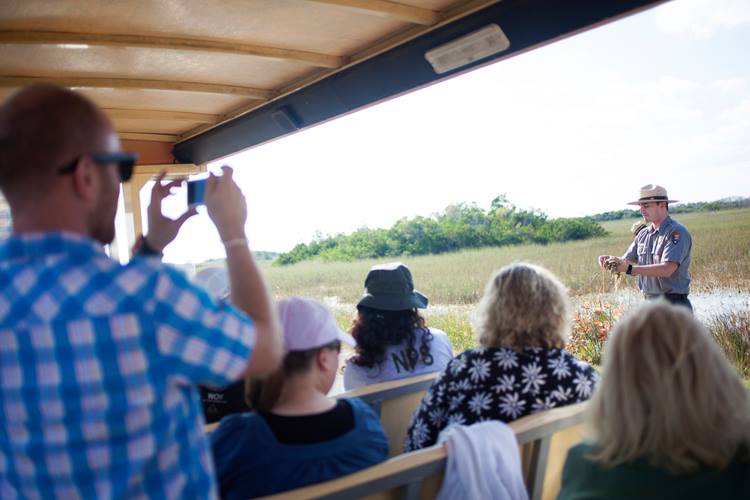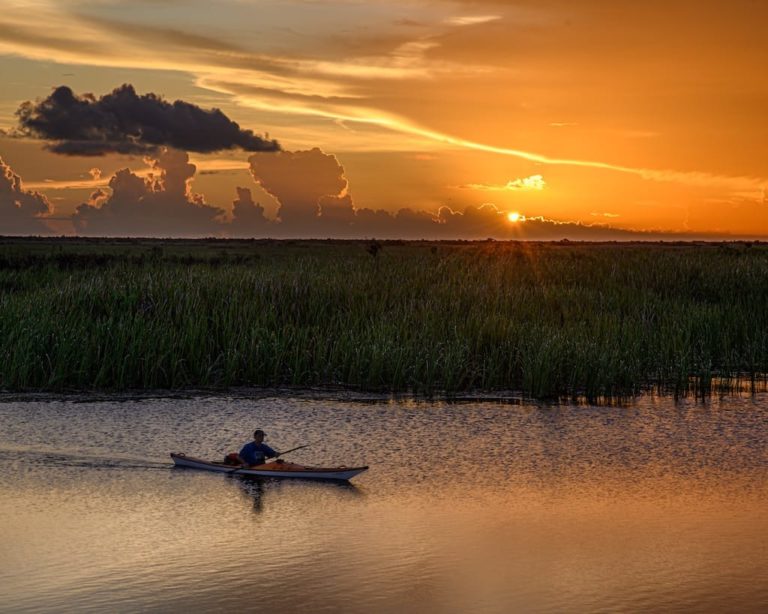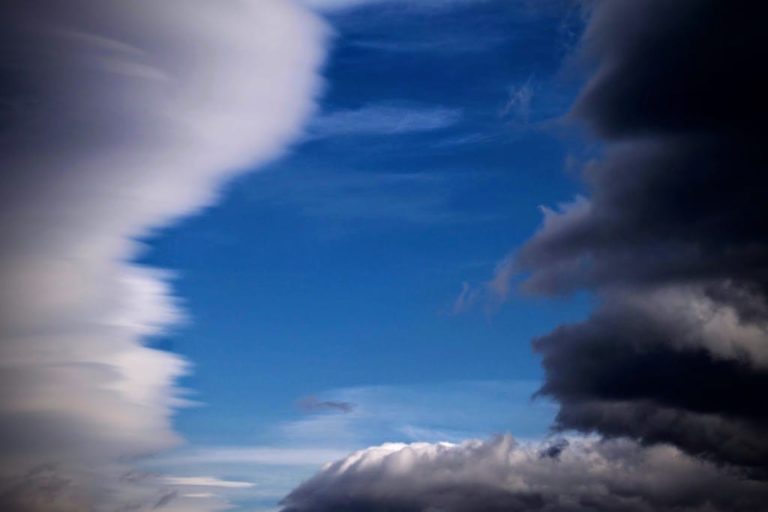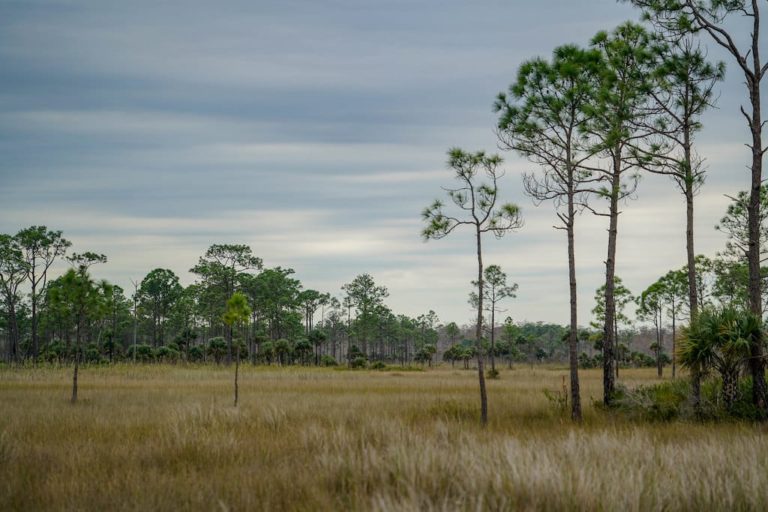Ten Thousand Islands
Florida’s 10,000 Islands are a chain of small islands off the coast of southwest Florida, partially contained in Everglades National Park.
The 10,000 Islands region is remote, rugged, and mostly uninhabited. Only a few hundred residents live on Chokoloskee Island, near Everglades City.
The name “10,000 Islands” is a local exaggeration; there are actually only a few hundred islands in the chain. Many of the islands are actually islets, very small mangrove islands, or mangroves growing on top of oyster bars.
Much of the landmass sits at sea level, or just above the water. Many islands and sandbars are only visible at low tide, and are submerged at other times.
Location
The 10,000 Islands region starts just south of Marco Island, near Everglades City, and extends south to Cape Romano, near the southernmost point of the Florida peninsula.
Much of the Ten Thousands Islands region is protected by the boundaries of Everglades National Park, Ten Thousand Islands National Wildlife Refuge and other protected areas.
How to get to 10,000 islands?
The best access to Ten Thousand Islands is provided via Everglades City, or Naples, which is located further to the north.
Ten Thousand Islands is accessible primarily shallow-draft boat or watercraft. Canoes and kayaks offer the platforms for fishing, boating, and camping because of their shallow draft, versatility and silent operation.
By land, Ten Thousand Islands can be accessed via Marco Island, Everglades City or Chokoloskee.
How to experience the 10,000 Islands
The best way to see the Ten Thousands region is by guided tour, via kayak, canoe or motor boat, because the area is dominated by water.
Boating and navigation are challenging due to shallow water, remote access and other factors.
Guided boat tours are the best choice for most people, and self-guided expeditions should only be considered by skilled and knowledgeable individuals. Even then, local knowledge is essential. Many areas are like mazes of shallow oyster beds, mangrove islets and thick mud which is difficult or dangerous to navigate.
Guided Tours in Ten Thousand Islands
Guided tours are an excellent way to explore the islands and learn about the local ecosystem, especially when boat crew are trained ecologists or biologists.
Things to do in Ten Thousand Islands
- Paddling, Kayaking and Canoeing
- Boat Tours
- Shelling
- Backcountry camping
- Fishing
- Night Sky Astronomy and Astrophotography
- Ecology and Nature Observation
- Birdwatching
- Cape Romano Dome Houses
Camping in Ten Thousand Islands
It is possible to camp in the Ten Thousand Islands, for the properly experienced, equipped and prepared.
Camping in Ten Thousand Islands is considered to be expert-level backcountry camping, and skills and expertise are required.
The Ten Thousand Islands region is known for its volatile weather conditions, including extreme heat, cold, wind and waves.
Only experienced, skilled paddlers should consider camping or exploring without an experienced guide.
Ten Thousand Island Campsites:
- Hog Key
- Turkey Key
- New Turkey Key
- Mormon Key
- Pavilion Key
- Rabbit Key
- Jewel Key
- Picnic Key
- Tiger Key
Ten Thousand Islands National Wildlife Refuge
Ten Thousand Islands National Wildlife Refuge, Everglades National Park,
Ten Thousand Islands National Wildlife Refuge is an area of protected nature in southwest Florida.
The wildlife refuge covers more than 35,000 acres, and is an important part of the broader Florida Everglades ecosystem.
The wildlife refuge includes a vast chain of mangrove islands, shallow bays, islets and estuaries, and a vast array of native Florida wildlife and marine life.
Visitors can access the wildlife refuge by boat and can experience the area with natural activities, including paddling, boating, and wildlife viewing.
Various licensed tour operators in the refuge offer guided boat tours, nature tours, canoe rentals and kayak rentals to learn about the ecosystem and explore the area.
Ecology
The ecosystem is mostly composed of saltwater marshes, mangrove tunnels, low-lying islands, islets, and estuaries.
The ecosystem is extremely rich, complex and supports a diverse network of life, including many native Florida species, like manatees, dolphins, and an amazing variety of birds.
Fishing in the islands, and offshore, is very popular. Popular target fish include tarpon, snook, redfish and others.
The Ten Thousand Islands region is an important breeding ground for juvenile marine life, including countless fish species. The Ten Thousand Islands, along with Florida Bay, are essential to the health of Florida’s marine diversity and health of its fisheries.
Some parts of the Ten Thousand Islands are protected, so visitors should be sure to follow regulations and be respectful of the sensitive natural environment.
Threats to the Ten Thousand Islands
Florida’s Ten Thousand Islands region is extremely fragile, and provides essential eco-services to southwest Florida and its human and wildlife inhabitants. Threats to the Ten Thousand Island include irresponsible development, pollution, sea level rise, climate change, intensifying storms and hurricanes, and others.
Does anyone live on Ten Thousand Islands?
Generally, people do not live in Florida’s Ten Thousand Island region, which is very sparsely populated.
One famous landmark, the Cape Romano dome houses, represent a famous attempt to live in the coastal region. The dilapidated dome houses have almost entirely disappeared, after decades of been battered by hurricanes and strong elements, demonstrating the ruggedness of the terrain and difficult conditions.
Historically the Ten Thousand Islands were inhabited by Florida’s native people, including the Seminole, Calusa, and previous indigenous peoples. Archeological evidence shows that the region was previously inhabited when sea levels were lower than they are today.

